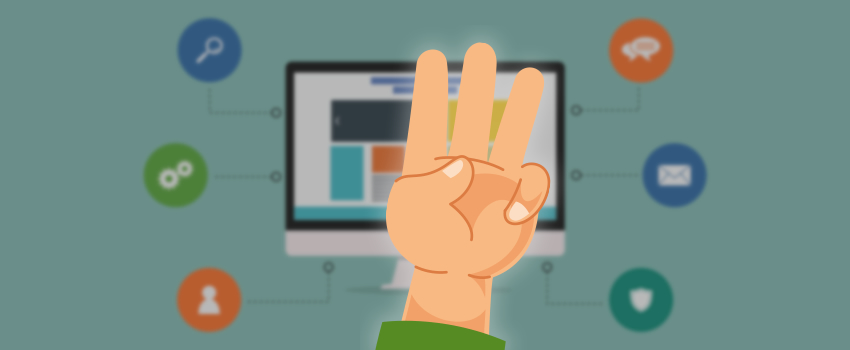
The SaaS-ification of ITSM Means More Than a Hosted Service Desk
When people think about software-as-a-service (SaaS) and IT service management (ITSM), they immediately think of a “hosted ITSM tool,” where their favorite service desk or ITSM tool runs off-premises in the cloud, usually hosted by the vendor.
However, the SaaS revolution is also happening outside of the ITSM world (yes, believe it or not, there is life outside of ITSM). This is great news for ITSM professionals because more and more of the things they manage (as IT services) are now actually delivered as a service, with real service management features such as user management, telemetry, and cost management included (if you’re lucky).
SaaS Works Best with SaaS
SaaS solutions are usually easy to integrate with each other and can create a holistic service management view of the organization. This is one of the key reasons why increased “SaaSification” is good for service management, and there are a number of things that you can do to reap the benefits of SaaS:
- SaaSify your ITSM tool
- Integrate your other SaaS systems
- One tool to rule them all
1. SaaSify Your ITSM Tool
Your ITSM vendor provides a complete ITSM tool with many commonly-used, and uncommonly-used (you know what I mean here), ITSM capabilities in it – a service desk or ticketing system, change management capabilities, and much more. These are all integrated, usually with one database behind them, and there is a consistent look and feel wherever you are within the tool. If a SaaS offering, then your ITSM vendor also offers to run and maintain the tool for you, taking care of patches, upgrades, and hosting. This is a SaaS or cloud-delivered ITSM solution.
Sadly, history is littered with horror-story projects of custom, on-premise installations of ITSM tools. They can take months to deliver, with the customization potentially done by people new to the tool, and perhaps on a one-off basis that fails to meet expectations. Then, too, much customization breaks upgrade paths. And maintenance is difficult, leading to stale systems that are too old to upgrade. Does this sound familiar?
If you SaaSify your ITSM tool, then you avoid these problems by turning over responsibility of the underlying system to your provider. Your responsibility is simply consuming the tool and supporting it with light administration, configuration and customization as needed, and integration.
2. Integrate Your Other SaaS Systems
When you SaaSify one part of your IT, you need to do some things to make it work, such as enabling federated identity. After doing this once, SaaS adoption becomes easy for everything else.
And once ITSM tools have been moved to the cloud, you can start to connect other SaaS systems to it. Consider a common SaaSified system – the corporate Customer Relationship Management (CRM) solution. This critical sales tool can be integrated with your SaaS ITSM tool via a plugin, and share back ends like federated identity. This allows things like single sign-on (SSO) to make users’ lives easier. And when a member of staff leaves, the HR “employee exit” process immediately, and with one touch, removes the user from the federation system and therefore from all SaaS systems.
For the ITSM team, they can now, from their service management viewpoint, more easily include the CRM service in their holistic view. Through plugins, they can gather data about the CRM service such as its uptime, the number of active users, and other stats exposed via the CRM API to the ITSM tool.
This can of course be possible with internal on-premise systems but the reality is that these non-cloud systems are often hidden behind gateways and firewalls, without APIs, and with other compatibility issues. SaaS systems on the other hand are built to be broadly accessible and ready for integration. They are focused on being easy to consume and understand.
3. One Tool to Rule Them All
Do you see what I did there?
A key learning from DevOps practitioners has been the realization that silos of people, data, applications, and systems create “information fog.” Their approach to resolving this is to break down silos, with one of the techniques to do this aligned with the DevOps practices of systems thinking, amplifying feedback loops, and continuous learning.
Tools can help here if there are fewer of them. Having a whole organization use the same tool to share information is critical, and a SaaS ITSM tool that connects to other SaaS systems such as CRM is a great example.
To help, there is an emerging API economy that is growing in correlation with SaaS adoption. All (good) SaaS products have APIs and they are easy to integrate with other systems. Plus, APIs are being extended from SaaS systems to internal, on-premise systems of record such as corporate databases. And practitioners that can exploit this evolution can integrate separate technology products into single (from the point of view of the user) tool.
So SaaSification, or the opportunities offered by the SaaS delivery model, should not be thought of in terms of a single product, ITSM or otherwise. Instead it should be considered as an organization-wide approach to increase the sharing of information by easing access and providing joined up views. Look at your ITSM tool as a central SaaS product that can connect to other SaaS tools to enable this.






